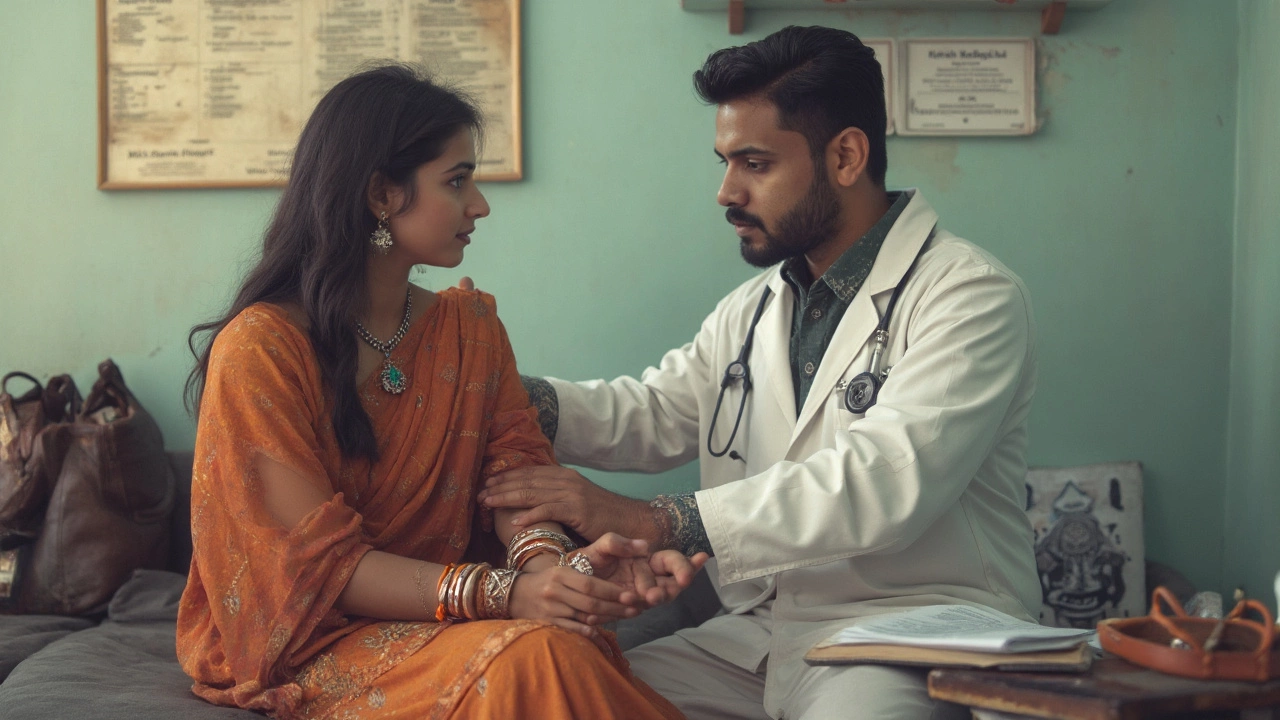
Showing up for your first orthopedic appointment can feel a little intimidating, especially if you’ve never set foot in a specialist clinic before. If your knee’s been cracking or your back’s been refusing to cooperate, you probably just want answers—and maybe some relief. Don’t worry, most first visits are straightforward and designed to actually make you feel comfortable. Orthopedic surgeons see it all day in, day out, so nothing will surprise them. You won’t be judged, and you definitely shouldn’t feel embarrassed.
Don’t forget to bring any previous X-rays or scans if you’ve done them elsewhere—these can really save time and help your doctor understand the whole story. It’s also smart to make a list of your symptoms, no matter how strange they seem. Some people think it’s only about broken bones, but ortho doctors see everything from joint pain to weird popping noises. Jotting these things down makes your chat go way smoother—because let’s be honest, it’s easy to forget the details when you’re sitting in that paper gown.
- Booking Your Appointment and What to Bring
- Getting Your History Straight
- Physical Exam: More Than Just Looking
- Diagnostic Tests—Imaging and More
- Setting Up Treatment and Next Steps
Booking Your Appointment and What to Bring
Getting in to see an orthopedic surgeon often starts with a referral, especially if you’re using insurance. Family doctors and sports medicine physicians usually know the best local specialists. Some hospitals let you book online, while others still want a phone call. Either way, expect to get a list of “what to bring” from the clinic when you sign up, but here’s what’s really smart to have ready:
- Government-issued ID (driver’s license, passport, etc.)
- Health insurance card and any referral notes
- Previous imaging: X-rays, MRI, CT scans (digital copies are fine!)
- List of medications and allergies
- Notes about your symptoms—when they started, what makes them worse, anything that helps
- Comfortable clothes that make it easy to show your injured area (think shorts for knee problems, short sleeves for shoulder issues)
One thing people forget a lot—shoes! If you’re dealing with foot, knee, or hip pain, bring the pair you wear most. Docs can learn a lot just by seeing your wear pattern or your gait in your daily kicks.
"Having all your records and images ready before your first appointment saves time and can seriously improve your visit. It’s a simple step, but it means we can jump right into making a plan that works for you."
— Dr. Richa Kumar, Orthopedic Surgeon, Mumbai
Many clinics now email or text appointment reminders. Missed appointments are still super common—one U.S. study found nearly 23% of orthopedic consults are no-shows. So double check your date and time!
| Essential Items to Bring | Why They Matter |
|---|---|
| Previous imaging results | Helps your doctor avoid repeat scans and speeds up the diagnosis |
| Referral paperwork | Some insurance plans won’t cover you without it |
| Medication/allergy list | Prevents dangerous drug interactions |
Arrive about 15 minutes early. There’s usually paperwork—consent forms, privacy info, and sometimes pain questionnaires. If you’re helping an older family member or someone who struggles with mobility, let the clinic know in advance so they can help make the check-in easier. Trust me, no question is too small—call ahead if you’re unsure about what counts as “essential” to bring along. It's your appointment, and being prepared keeps things as stress-free as possible.
Getting Your History Straight
This is where your first visit really gets rolling. The orthopedic surgeon needs to know exactly what's going on with your joints, bones, or muscles. Think of this as detective work—your story gives the first big clues. The more thorough you are, the easier it is to figure out what’s wrong.
You’ll probably answer a bunch of questions about:
- When did your pain or problem start?
- How bad is it—does it come and go, or is it constant?
- Do certain activities make things worse or better?
- Have you tried any treatments or medications already?
- Past injuries or surgeries, even if they seem unrelated.
Surgeons love details. They may ask you to rate your pain on a scale of 1 to 10, or point to the exact spot that hurts. If you’ve ever been in physical therapy before, bring notes or paperwork—they’ll want to know what worked and what didn’t.
Family history matters too. If parents or siblings have had joint replacements or repeated bone injuries, mention it. Some conditions run in families, and this info could change what tests your doctor orders.
Don’t forget your overall health. The surgeon will want to know about things like diabetes, high blood pressure, or allergies. Even daily medications and vitamins count. They’re not being nosey—it just helps them map out the safest plan for you.
| History Element | Why It Matters |
|---|---|
| Symptom Timeline | Shows if the problem is sudden or chronic |
| Pain Triggers | Helps pinpoint the real cause |
| Previous Treatments | Avoids repeating failed options |
| Family Medical Issues | Reveals risks you might share |
| Current Medications | Prevents dangerous drug interactions |
This part can feel a little personal, but skipping details just leads to more guessing and extra appointments later. It’s way better to lay it all out early. That helps your orthopedic surgeon spot red flags and work up a plan that actually fits your life.

Physical Exam: More Than Just Looking
Once the orthopedic surgeon calls you in, the physical exam kicks off. This is where things get specific—it's not just “take a look and send you off.” The surgeon asks you to show exactly where it hurts, and they might watch you walk, squat, or move certain joints. This helps spot things you might not realize, like a limp or a range of motion problem. Don’t stress if you feel awkward; the point is to see how your body works in real life, not just in pictures.
The doctor checks for swelling, warmth, or redness. They’ll feel (yes, with their hands) for any odd lumps or tenderness. You’ll likely be asked to perform some simple movements, like bending your knee, rotating your shoulder, or standing on your toes. These little tests aren’t random—they help the surgeon figure out which muscles or joints are misbehaving.
- orthopedic surgeon always checks both sides for comparison, even if only one hurts
- Tests might include checking your reflexes or how strong you can push or pull against their hand
- Balance and coordination sometimes get tested with easy standing or walking drills
If you’re worried about pain during the exam, say so. Surgeons aren’t trying to “catch you out”—they’re just gathering details to get an accurate diagnosis. Think of this as detective work, not a pass/fail test.
Quick fact: Around 85% of a diagnosis comes from listening to your story and what they find during this exam—before any fancy scans even come into play. So, those few minutes count way more than you’d think.
| What the Surgeon Checks | Why It's Important |
|---|---|
| Range of motion | Shows if anything is stiff or limited |
| Swelling/redness | Signals injury or inflammation |
| Strength tests | Checks for muscle weakness around joints |
| Nerve sensation | Rules out nerve pinching or other issues |
Don’t hold back about what hurts. The doc relies on your feedback to test specific spots, and the info you give can change the game for your diagnosis and treatment plan.
Diagnostic Tests—Imaging and More
This is where things get interesting. After hearing your story and checking you out, the orthopedic surgeon often orders tests to see what’s really going on inside. Remember, bone and joint problems are tricky—your knee might hurt, but the real issue could be something you can’t see or feel.
The main types of tests you’ll probably hear about:
- X-rays: These are the go-to for checking bones—fractures, arthritis, bone spurs. Fast, painless, and available right there in most clinics.
- MRI (Magnetic Resonance Imaging): If soft tissue problems are suspected (think ligaments, cartilage, tendons), an MRI gives a detailed picture. It takes a bit longer than an X-ray, but you usually get more answers.
- CT Scan (Computed Tomography): Super detailed images for tricky areas. Surgeons often use this when bones are in weird positions or for surgical planning.
- Ultrasound: Yes, it’s not just for babies. Orthopedic doctors use it to peek at muscles and fluid around joints.
Don’t be surprised if you don’t get all the tests at once. The surgeon will decide what’s needed based on your exam and symptoms. Sometimes you’ll get the test right away, sometimes you’ll be sent to another department or facility—depends on what they have on-site.
| Type of Test | Best For | Average Time | Special Prep Needed? |
|---|---|---|---|
| X-ray | Broken bones, arthritis | 5-10 min | No |
| MRI | Soft tissues, ligaments | 30-60 min | Remove metal |
| CT Scan | Complex fractures, joints | 10-15 min | Sometimes |
| Ultrasound | Muscles, joint fluid | 10-20 min | No |
Bring up any allergies, implanted devices (like pacemakers), or pregnancy, especially if you need an MRI—that’s a must for safety. And if you’re one of those people who feels anxious about being in tight spaces, tell the team ahead of time. They deal with this all the time, and there are usually simple ways to help you stay relaxed.
Bottom line: These tests help the orthopedic surgeon pin down exactly what’s wrong, so you’re not left guessing. Clear answers mean better treatment and a faster path back to normal life.

Setting Up Treatment and Next Steps
This is where your first visit actually starts to feel useful. After figuring out what’s going on, the orthopedic surgeon will lay out a game plan. No two people get exactly the same plan, because everyone’s pain, movement, and health are different. The options can range from pretty simple to more involved—there’s no "one size fits all." If your problem seems minor, you might get tips for home exercises, a referral for physical therapy, or a suggestion to change up your daily routine. Some doctors even demonstrate stretches or exercises you can do right away to stop things from getting worse.
If your issue is a bit more complicated, you might get a prescription for certain medications—think anti-inflammatories for pain or swelling. In some cases, braces, splints, or support shoes can help. The doctor will show you exactly how to use them and check if you’re comfortable with it. If there’s talk of surgery, don’t freak out. Usually, surgery is the last option. Your ortho will walk you through every detail, including why it’s necessary and what recovery looks like. You’ll have time to ask questions, and most doctors actually expect you to have a few (so bring a list if you want).
- Make sure you understand your diagnosis. If it's not clear, ask your surgeon to explain it in plain language.
- Review your treatment plan, including home care and follow-up appointments.
- Get clear instructions on medications: when, how much, and what to watch for.
- Ask if physical therapy or using special gear is needed.
- Take home contact info—if your symptoms get worse, you should know who to call fast.
Before you leave, you’ll usually get a summary of everything you discussed and any steps to take before your next visit. Some clinics email this, while others hand it to you. So if you’re worried about forgetting something, don’t stress—there’s always a backup. The whole point of the first visit is to set you up for success, not to leave you guessing.

Write a comment